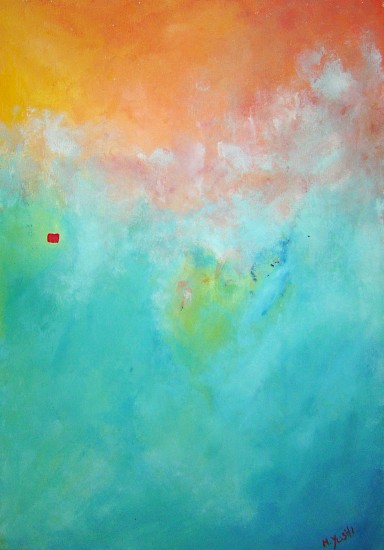
“Tying the Past to the Future: the Turban” comes from ninth grader and Gold Medalist Sahej Suri, of the Bronx, NY.
I have always been proud to be a Sikh, though when I was very young, I did not exactly understand its implications; I only knew that being a Sikh was a good thing. In the innocence of youth, I had little conception of how the manifestations of my religion would set me apart from my peers. As a small boy, I began to realize I was different through a very apparent outward sign of Sikhism: my hair.
Family photos attested to the fact that, indeed, I was long overdue for a haircut. But, as a Sikh, such a conjecture was unthinkable; Sikhs never cut their hair. In fact, one of my earliest recollections has to do with my hair, which, by the time I was three years old, had become long, wavy and more uncontrollable with each day.
Sikh boys start wearing a patka when their hair grows to an unruly point. My hair was long passed “unruly”, and well on its way to disastrous! The patka, a hair covering, is made from about two square feet of cotton fabric and is wound about the head forming a knot at the top. It would tame my unruly mop. Mom told me I was too young to possibly tie a patka myself. Somewhat hesitant, she tied my first patka so that my hair rested in a knot on top of my head and was secured with a piece of fabric that imprisoned all wayward strands of hair. Now, at least at Temple, I felt like I fit in. Still, I remember feeling different at school, only in a different way. I still felt as if I stood out from my classmates. Actually, that was the idea; for a Sikh, standing out is a good thing.
Then 9/11 shook the world! People started to scrutinize me even more judgmentally. They were confusing me with extreme Islamists, Afghani Taliban, or Osama Bin Laden. I was no terrorist! On the contrary, Sikhism advocates non-violence. I remained proud of who I was, and I was not afraid to stand out. By the time I reached middle school, my classmates were beginning to mature and became more sensitive to my beliefs. Sometimes, some of them even admired them. By the time I reached eighth grade and was going into high school, I began to think that I was ready to practice Sikhism more openly. I felt I was ready to wear a turban.
Most religions have some sort of ceremony which signifies taking on more responsibilities within the faith. For a Sikh, it is called the Dastar Bandi, which is the turban tying ceremony. Most coming of age ceremonies involve a great deal of studying; the Dastar Bandi is no exception. So, I began to study in earnest, the Sikh scripture and prayers. First, I sought the wisdom of the raagis, spiritual musicians who sing and chant the word of Waheguru when we worship in the temple I had intense learning ahead of me, topped with a lot of pressure.
The raagis gave me more spiritual and physical insight into the meaning of wearing the turban. It is an outward sign that I am a Sikh, sworn to protect against injustice. The wearing of the turban gave the message to others that they could come to me for help. The more I was taught, the prouder I became of my forefathers, and the more I became aware of the tasks I was undertaking.
By wearing the turban, I was outwardly signifying that I was committed to follow the challenges set by our Gurus. I was accepting the responsibility of becoming a true Sikh and of carrying out the core values of Sikhism throughout my life: discipline, honesty, integrity, spirituality, ethics, and humanity. The turban to me and to all Sikhs is not just headgear. It is an outward symbol of my pledge to be a good human being and a good global citizen. By wearing my turban each day, I openly show I am anxious to be helpful to others. I knew that traditionally, the turban had taken this specific form so that a Sikh would be visible; one must not hide his identity from others. I knew it was my duty to stand out so people would know that I will not turn away when someone needs help.
Guru Gobind Singh Ji asked us to understand that, “the human race is one.” My parents have set an example for me, and now it is my turn to set my own.
